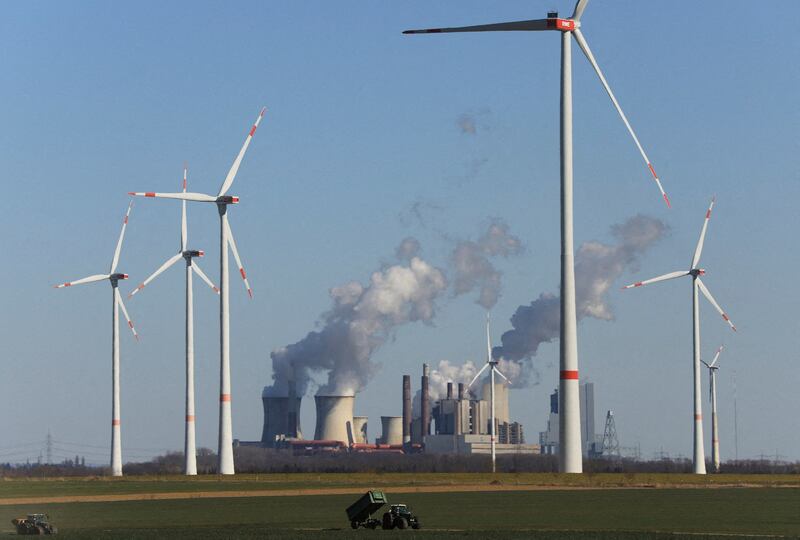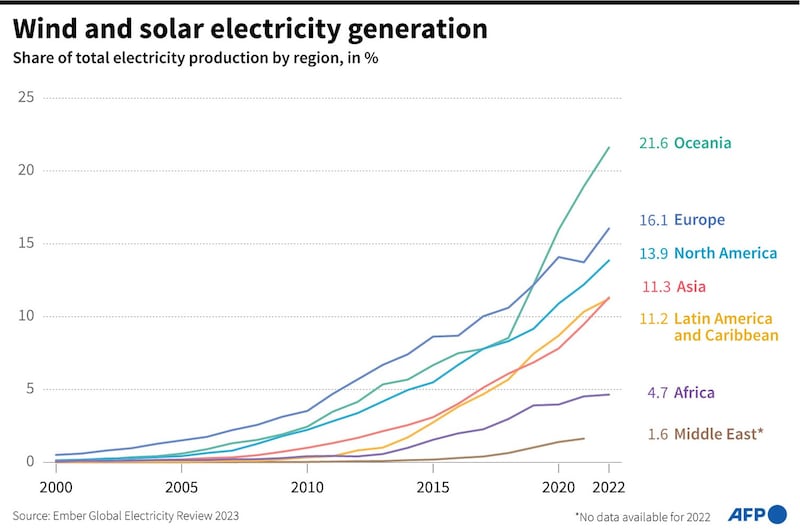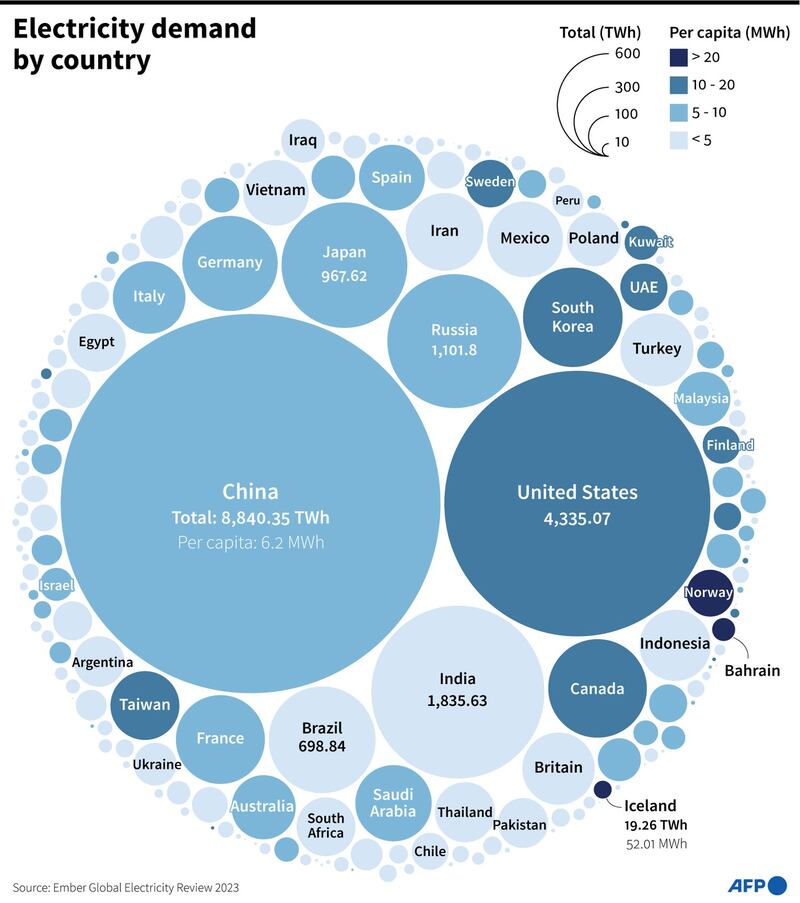Wind and solar reached a record 12% share of global electricity generation in 2022, up from 10% in 2021, with China leading in both sectors, a report by an independent think tank said Wednesday.
Solar was the fastest-growing source of electricity for the eighteenth year in a row, rising by 24% year-on-year, according to the fourth Global Electricity Review released by Ember, a U.K.-based energy and climate research group.
The global growth in wind and solar power was primarily driven by rising use in China, which accounted for 37% of the worldwide increase. Solar’s share of global power output last year was 4.5%, or 1,284 terawatt hours, up from 3.7% in 2021. A terawatt hour is equal to 1 trillion watts of power for one hour.
Meanwhile, 312 terawatt hours of wind energy were added to global electricity generation in 2022. It means wind now contributes to 7.6%, or 2,160 terawatt hours, in the international power mix, up from 6.6% last year, an increase of 17% year-on-year.

Ember said 2022 is “a turning point in the world’s transition to clean power.”
“2022 beat 2020 as the cleanest ever year, as emissions intensity reached a record low of 436 gCO2/kWh [grams of carbon dioxide equivalent per kilowatt-hour of electricity generated], “the report said.
The data revealed that China emerged as the global leader in solar, generating 418 terawatt hours of electricity, accounting for 4.7% of the country’s total electricity.
The report said about a fifth (or 55 gigawatts) of all the solar panels installed globally in 2022 were on China’s rooftops, driven mainly by an innovative three-year policy called “Whole-County Rooftop Solar” that started in 2021.

China also retained its position as the world’s largest wind power generator in 2022, with a 9.3% wind share in its electricity mix.
Denmark took the lead in wind generation by percentage share, with 55% of its electricity coming from wind power alone, while Chile topped the list of countries with the highest share of solar energy, with 17% solar in its electricity output.
In the U.S., the share of wind and solar in total electricity generation increased from 13% in 2021 to 15%, or 644 terawatts hours, in 2022. Around 60% of its electricity still comes from fossil fuels, with a large chunk coming from gas, followed by coal.

80% of the rise in global electricity demand was met by new wind and solar generation in 2022, said the report that collated 2022 electricity data from 78 countries, representing 93% of global electricity demand.
“Electricity is cleaner than ever, but we are using more of it,” the report said.
The combination of all renewable energy sources and nuclear power represented a 39% share of global electricity generation last year, a new record high.
The power sector is the most significant global contributor to planet-warming carbon dioxide emissions.
China, the largest CO2 emitter due to coal
Among the top 10 power sector emitters, China led the world by three times more than the U.S., the second-biggest carbon dioxide emitter.
Ember said China produced the most CO2 emissions of any power sector in the world last year since coal alone made up 61% of China’s electricity mix, which is 17 percentage points fall from 78% in 2000, even though in absolute terms, it is five times higher compared to the start of this century.
At 4,694 million metric tons of CO2, China accounted for 38% of total global emissions from electricity generation.
However, China alone accounted for 53% of the world’s coal-fired electricity generation in 2022, which showed a dramatic revival in appetite as new coal power plants were announced, permitted, and went under construction dramatically in China.
“China is the world’s biggest coal power country but also the leader in absolute wind and solar generation,” said Małgorzata Wiatros-Motyka, the report’s lead author and Ember’s senior electricity analyst.
“Choices being made about energy in the country have worldwide implications. Whether peaking fossil generation globally happens in 2023 is largely down to China.”
Li Shuo, a senior policy advisor for Greenpeace in East Asia, said China is “the 800-pound gorilla when it comes to the global power sector.”
“China has no doubt been leading global renewable energy expansion. But at the same time, the country is accelerating coal project approval,” Li said, adding such a dichotomous relationship “won’t carry the country far to truly decarbonize.”

Coal power remained the single largest source of electricity worldwide in 2022, producing 36%, or 10,186 terawatt hours, of global electricity.
In 2022, coal power rose by 108 terawatt hours, a 1.1% increase, reaching a record high, largely attributed to the global gas crisis triggered by the Russia-Ukraine war and the revival of coal-fired power stations to meet demand by some countries.
Coal use for electricity rose in India by 7.2%, in the E.U. by 6.4%, in Japan by 3.1%, and in China by 1.5%.
Gas-fired power generation fell by 0.2%. Overall, that still meant that power sector emissions increased by 1.3% in 2022, reaching an all-time high of 12,431 million metric tons of CO2, the report said.
Without renewables, it is estimated that power sector emissions from fossil fuels would have been 20% higher in 2022.
Last year may have been the “peak” of electricity emissions and the final year of fossil power growth, with clean power meeting all demand growth this year, according to Ember’s forecast.
According to modeling by the International Energy Agency, the electricity sector needs to move from being the highest emitting sector to the first sector to reach net zero by 2040 to achieve economy-wide net zero by 2050.
This would mean wind and solar reaching 41% of global electricity by 2030, compared to 12% in 2022.
Edited by Mike Firn.
